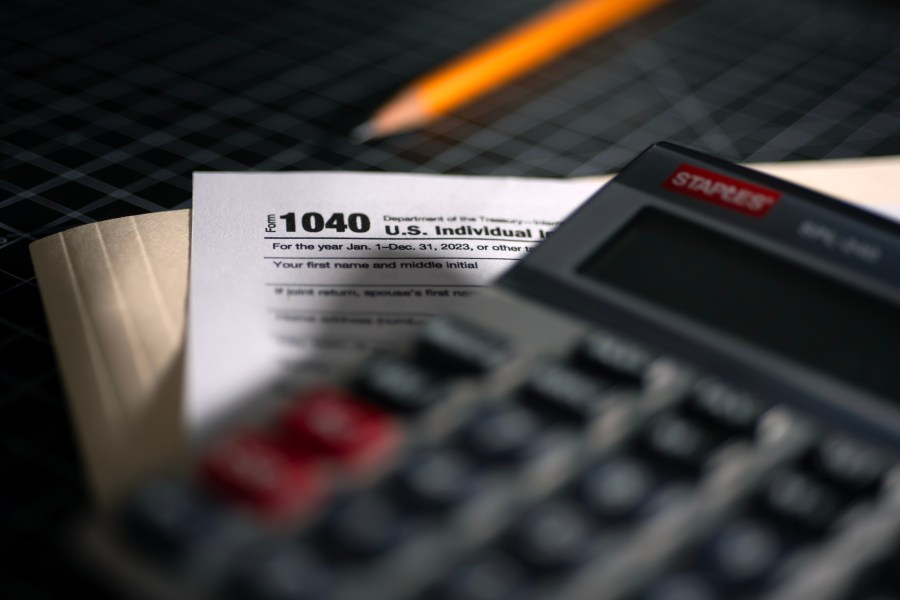
4 tax advantages for homeowners in 2025
(NewsNation) — The 2025 tax filing season is underway, and there are several tax benefits that can help homeowners save money this year.
Homeowners can deduct costs like mortgage interest and personal property taxes up to a certain limit in order to reduce their tax bill. In certain cases, home improvements can also be deducted.
Keep in mind: If you want to deduct homeownership expenses, you’ll have to opt for itemized deductions. Most taxpayers, around 90%, claim the standard deduction, which is a flat amount based on your filing status.
For many taxpayers, the standard deduction is higher than their itemized deduction would be, so it’s worth running the numbers and figuring out which option is best for you.
Mortgage interest deduction
The interest portion of your mortgage payment is tax deductible, but it requires you to itemize your tax return.
The mortgage interest deduction is a tax incentive for homeowners and lets you reduce your taxable income for the amount you’ve paid in mortgage interest during the year.
Generally, you can deduct interest paid on up to $750,000 worth of your principal on either your first or second residence. For those who are married and filing separately, the limit drops to $375,000. The limits are higher if you bought the house before Dec. 16, 2017.
There are several criteria your home loan has to meet to qualify. For example, you can’t deduct any mortgage interest debt whose proceeds did not go toward the construction, purchase or improvement of a home.
Also: If you bought points on your mortgage, you may be entitled to a similar tax deduction.
You’ll find a summary of your mortgage interest payments on Form 1098, which lenders send out around the end of January.
Who benefits?
“The benefits of the deduction go primarily to high-income taxpayers because high-income taxpayers tend to itemize more often, and the value of the deduction increases with the price of a home,” according to the Tax Foundation, a Washington, D.C.-based think tank.
For perspective: Just 7.5% of taxpayers making under $200,000 itemized in 2020, while 45% of taxpayers making over $200,000 itemized, according to the Bipartisan Policy Center.
State and Local Tax (SALT) Deduction
Homeowners who itemize their tax returns can deduct the property taxes they pay on their residence up to a limit.
The state and local tax (SALT) deduction allows taxpayers to deduct up to $10,000 of the money they spent on certain state and local taxes — including property, income and sales tax.
Those who take advantage of the SALT deduction have to choose between income and sales tax — you can’t deduct both.
Before the Tax Cuts and Jobs Act (TJCA), there was no cap, but now, the maximum SALT deduction is $10,000. However, that cap is set to expire at the end of tax year 2025.
According to the IRS, the taxes and fees that taxpayers can’t claim as SALT deductions include:
Social security taxes
Federal income taxes
Transfer taxes (such as taxes imposed on the sale of property)
Stamp taxes
Homeowner’s association fees
Estate and inheritance taxes
Service charges for water, sewer, or trash collection
Who benefits?
Depending on where you live, the property tax deduction can be valuable.
Taxpayers with higher tax liabilities in areas with higher state and local tax rates tend to see the most significant benefits from the SALT deduction.
Before the TJCA, 91% of the benefit of the SALT deduction was claimed by those with income above $100,000 and concentrated in just six states, according to the Tax Foundation.
Necessary home improvements
You can’t write off the new sofa that spruced up your living room, but some home improvements, so-called capital improvements, do have tax benefits.
According to the IRS, an improvement must add to the value of your home, prolong its useful life or adapt it to new uses.
Certain capital improvements considered to be medical expenses can qualify for deductions. Think of necessary upgrades like installing an entrance ramp or widening a doorway so a wheelchair can pass through.
Other upgrades that make your home more accessible may qualify as well — projects like adding railings to a bathroom or installing modified smoke detectors for someone with hearing issues.
Homeowners may also be eligible to deduct upgrades to their home office if it is their main place of business.
Generally, capital improvement expenses are depreciated over time, meaning the full cost of the change is divided by its useful life, and that’s the amount you can deduct in a given year, according to Investopedia.
Remember: Capital improvements and home repairs are not the same thing in the eyes of the IRS.
Repairs are changes like painting a room or fixing a leak, while improvements add to the home’s value or prolong its life.
Green energy upgrades
You could be eligible for a tax credit if you made energy-efficient improvements to your home.
Unlike tax deductions, which reduce your taxable income and are based on your tax rate, tax credits directly reduce the taxes you owe and don’t depend on your income.
If you’ve installed new energy equipment to your home like solar panels, you may be eligible for the Residential Clean Energy Credit. That credit is worth 30% of the costs of new, qualified clean energy property that’s installed anytime from 2022 through 2032.
The credit is nonrefundable, which means the credit amount you receive can’t exceed the amount you owe in tax.
There’s also the Energy Efficient Home Improvement Credit which covers upgrades that reduce home energy use. Improvements like insulation, central air conditioners and exterior doors may qualify. It’s a 30% credit up to $1,200 for changes made between 2023 and 2032.
There’s even a credit available for installing electric vehicle recharging equipment at your home. The federal tax credit for EV chargers is worth 30% of the costs of the qualifying equipment, up to $1,000 per charging port.
Learn more about which home upgrades qualify here.
Here’s what you can’t deduct
Homeowners can’t deduct any of the following items, according to the IRS:
Insurance, including fire and comprehensive coverage, and title insurance.
The amount applied to reduce the principal of the mortgage.
Wages paid to domestic help.
Depreciation.
The cost of utilities, such as gas, electricity or water.
Most settlement or closing costs.
Forfeited deposits, down payments or earnest money.
Internet or Wi-Fi system or service.
Homeowners’ association fees, condominium association fees or common charges.
Home repairs.
Find out how much you can save on your taxes as a homeowner using Freddie Mac’s tax savings calculator here.



